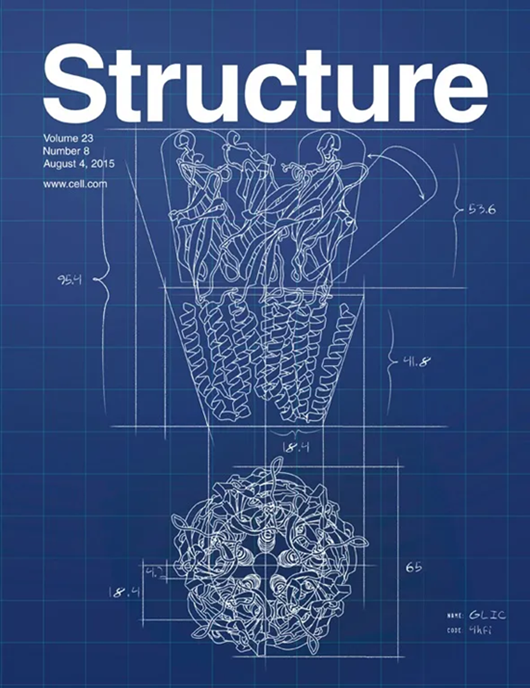A class III ligand oscillates between internal and terminal binding modes as it engages with the Dishevelled PDZ domain
IF 4.3
2区 生物学
Q2 BIOCHEMISTRY & MOLECULAR BIOLOGY
引用次数: 0
Abstract
One of the largest domain-motif interactomes in human involves PSD-95/Discs-large/ZO-1 (PDZ) domains. The framework for understanding the PDZ interactome is well established; however the functional dynamics associated with PDZ-ligand interactions are poorly understood. Here, we report a dual PDZ-binding mode that ascribes unique dynamic features to class III ligand recognition. The crystal structure revealed that the PDZ domain can recognize either of the carboxylate moieties (terminal or internal) present in the class III ligand and laid out the register rules responsible for the dual recognition. Variants of the ligand designed to retain one or the other carboxylate of the native sequence were sufficient for PDZ binding. The conformational dynamics of PDZ probed by NMR relaxation dispersion experiments demonstrated that the class III ligand is shuffling binding modes as it engages with the PDZ domain. Our mechanistic findings reveal yet another aspect of PDZ binding plasticity specific to class III ligands.

III类配体在内部和末端结合模式之间振荡,因为它与散乱PDZ结构域接合
人类最大的结构域-基序相互作用组之一涉及PSD-95/ disc -large/ZO-1 (PDZ)结构域。理解PDZ相互作用的框架已经很好地建立起来了;然而,与pdz配体相互作用相关的功能动力学却知之甚少。在这里,我们报告了双pdz结合模式,将独特的动态特征归因于III类配体识别。晶体结构揭示了PDZ结构域可以识别III类配体中存在的羧酸基(末端或内部),并制定了负责双重识别的注册规则。配体的变体被设计为保留天然序列的一个或另一个羧酸,足以与PDZ结合。核磁共振弛豫色散实验探测的PDZ构象动力学表明,III类配体在与PDZ结构域结合时是洗牌结合模式。我们的机制发现揭示了III类配体特有的PDZ结合可塑性的另一个方面。
本文章由计算机程序翻译,如有差异,请以英文原文为准。
求助全文
约1分钟内获得全文
求助全文
来源期刊

Structure
生物-生化与分子生物学
CiteScore
8.90
自引率
1.80%
发文量
155
审稿时长
3-8 weeks
期刊介绍:
Structure aims to publish papers of exceptional interest in the field of structural biology. The journal strives to be essential reading for structural biologists, as well as biologists and biochemists that are interested in macromolecular structure and function. Structure strongly encourages the submission of manuscripts that present structural and molecular insights into biological function and mechanism. Other reports that address fundamental questions in structural biology, such as structure-based examinations of protein evolution, folding, and/or design, will also be considered. We will consider the application of any method, experimental or computational, at high or low resolution, to conduct structural investigations, as long as the method is appropriate for the biological, functional, and mechanistic question(s) being addressed. Likewise, reports describing single-molecule analysis of biological mechanisms are welcome.
In general, the editors encourage submission of experimental structural studies that are enriched by an analysis of structure-activity relationships and will not consider studies that solely report structural information unless the structure or analysis is of exceptional and broad interest. Studies reporting only homology models, de novo models, or molecular dynamics simulations are also discouraged unless the models are informed by or validated by novel experimental data; rationalization of a large body of existing experimental evidence and making testable predictions based on a model or simulation is often not considered sufficient.
 求助内容:
求助内容: 应助结果提醒方式:
应助结果提醒方式:


